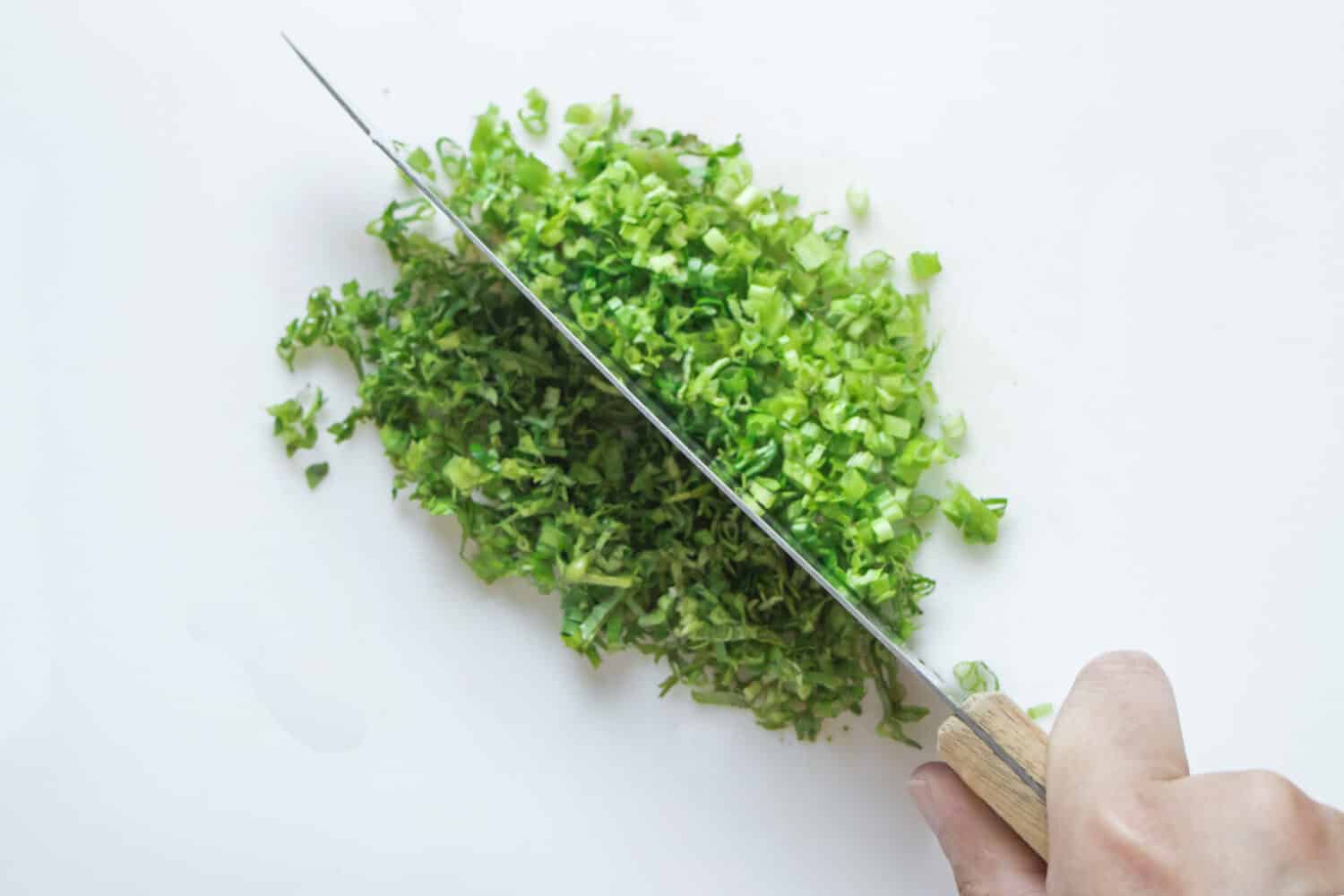Although they are both herbs and excellent for flavoring various dishes, there is a difference between culantro and cilantro. First, cilantro is typically best to garnish dishes after cooking, and this herb has a pleasing aroma and savory flavor. Some also describe cilantro as having a soapy flavor, which may seem strange. However, this soapy flavor is due to the aldehyde chemicals in the cilantro leaves.
Conversely, culantro is similar to cilantro, yet this herb has a potent flavor, quite a bit stronger than cilantro. Furthermore, this is not where their differences stop. This article will continue to explore the main differences in taste and when it is best to use each herb.
Culantro vs. Cilantro: Taste Differences & When to Use Each
Cilantro is often great as a fresh herb topping on various dishes. In contrast, culantro can cook into dishes, mainly due to its ability to reduce the aroma and flavor while cooking. When comparing the two, it is important to notice that culantro and cilantro may appear similar at first glance but vary in appearance and flavor. Let's take a look at each difference below.
Flavor Differences Between Culantro and Cilantro
While the aroma of culantro and cilantro are very similar, they do not derive from the same plant. This means the differences in flavor make sense.
Culantro has a powerful aroma and an even stronger flavor. Additionally, many describe culantro as being bitter and a bit soapy. Often the strong odor is said to remind one of the crushed-up stinkbugs. With the intense odor and flavor, you may wonder why anyone would choose to use culantro in their dishes.
While fresh, the intense flavor and odor may be offputting; however, once cooked into a dish, culantro adds a savory and delectable flavor that many enjoy. When used in smaller amounts, culantro cooks nicely into various dishes, adding a colorful and favorable taste.
Cilantro is also strong in flavor and aroma. However, not quite as strong as culantro. The milder flavor makes it easier to use cilantro as a topping and garnish to many dishes, adding just the right flavor for a savory dish.
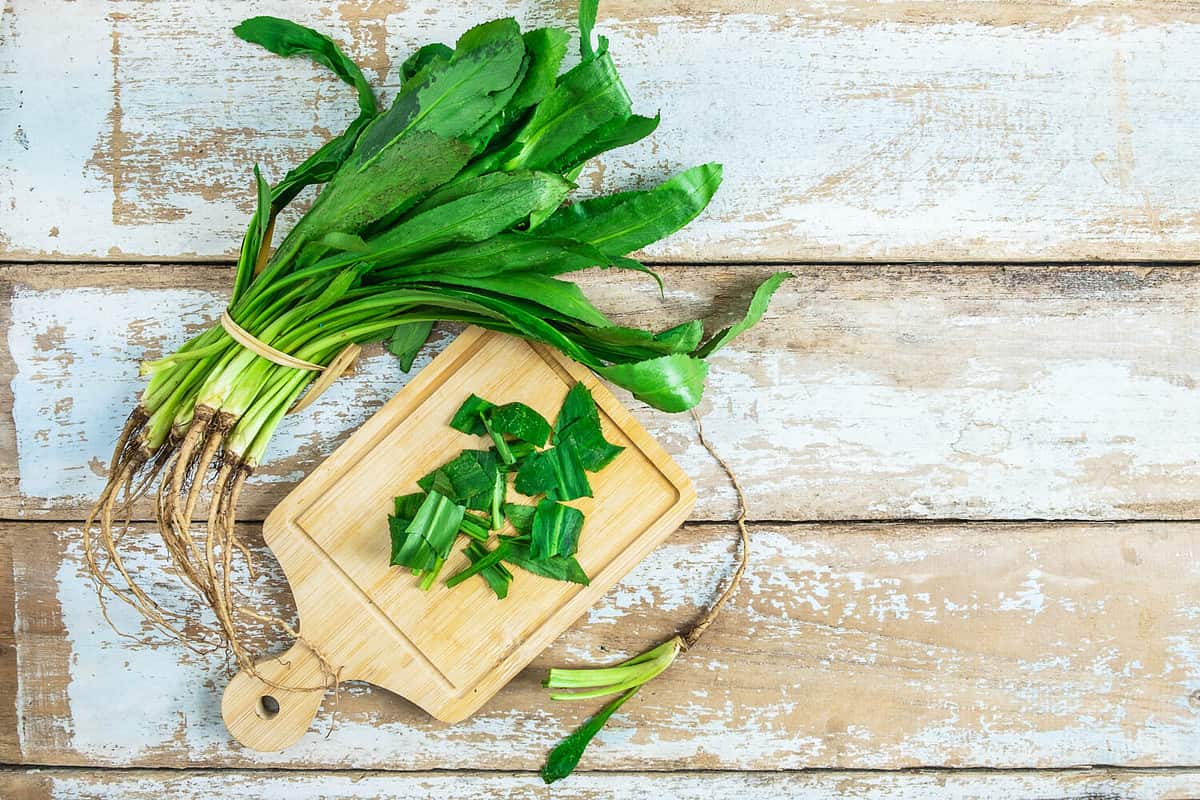
The flavor and aroma of both culantro and cilantro are quite similar. However, culantro has a much more powerful aroma and taste that often feels overpowering. Therefore, cooking this herb with your dish can help cook down the flavor a bit.
©Narong Khueankaew/Shutterstock.com
When to Use Culantro
Due to its strong flavor and aroma, culantro is best in small amounts. Unlike cilantro, which can be wonderful as a topping, culantro is best when cooked into the dish. With that said, if you use cilantro in a dish, it's also possible to use culantro as a substitute.
Remember, though, that it's best to use less culantro than cilantro and add it to the dish during the cooking process, not afterward.
When to Use Cilantro
Cilantro is a herb that has been around since the ancient era. Its delicious herb adds a unique flavor to many salads, soups, drinks, and other dishes. It can be delicious raw, giving the dish a powerful and sharp flavor. It's also possible to cook cilantro to the end of a dish for a minute or two.
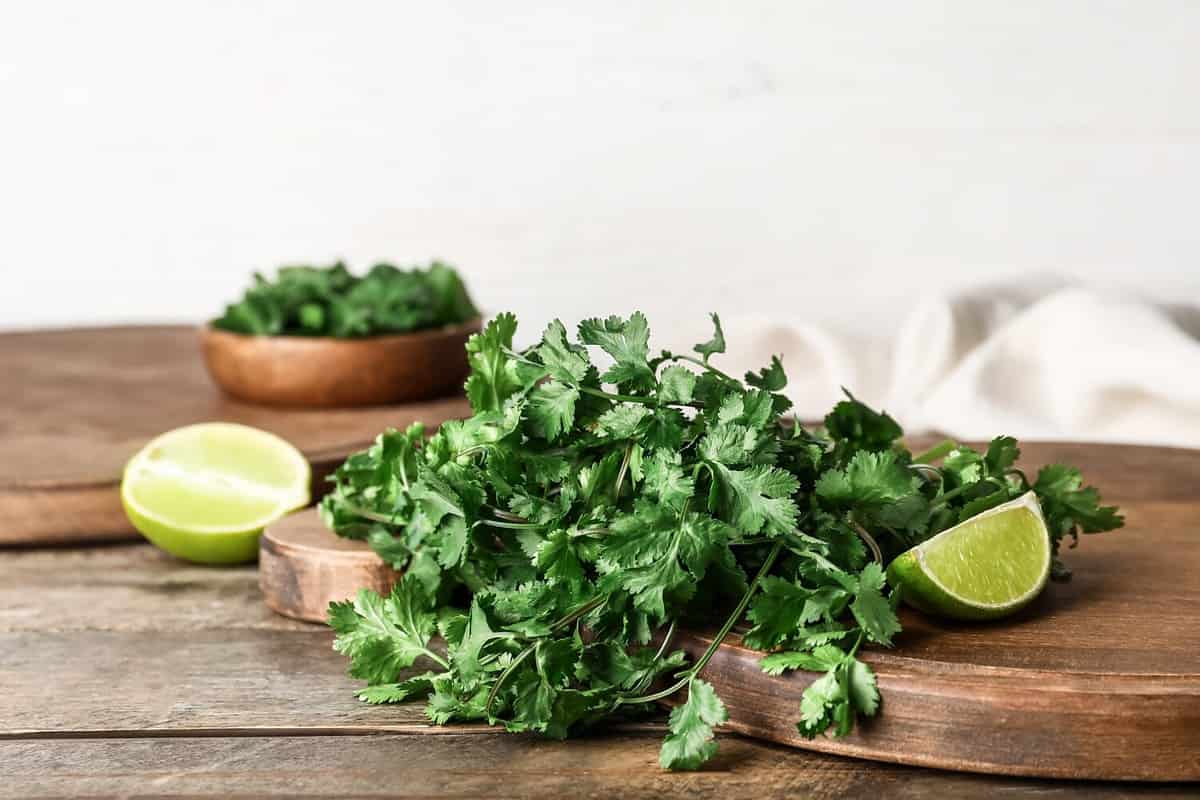
The flavor and aroma of both culantro and cilantro are quite similar. However, culantro has a much more powerful aroma and taste that often feels overpowering. Therefore, cooking this herb with your dish can help cook down the flavor a bit.
©Pixel-Shot/Shutterstock.com
Culantro vs. Cilantro: Health Benefits
Regarding nutritional value, culantro and cilantro have similarities and differences. Cilantro is high in vitamins and low in minerals; this is due partly to the fact that cilantro has a high concentration of water.
Studies also reveal that cilantro may even have the ability to fight risk factors for heart disease and reduce inflammation.
Culantro is often used as a medical herb, prepared in tea, and has health benefits, including iron, calcium, riboflavin, carotene, and possibly fighting the flu.
What is Culantro?
Culantro is a herb that is native to tropical Americas and West Indies. Also, it is a member of the Apiaceae family, which groups carrots, parsnips, and parsley together.
The best-growing condition for culantro is in shaded areas that are very moist and well-irrigated.
Culantro is very similar to lettuce when it comes to how it grows. The leaves grow around a base rosette, although the leaves are long with serrated edges, giving off a saw-like appearance. The appearance of culantro is one reason for the many different names that follow this herb. These names include:
- Spiny cilantro
- Saw-toothed mint
- Long-leaved coriander
In addition, culantro is popular in culinary uses and as a medical herb. It has a strong, bitter-like taste and fragrance. However, when cooked inside dishes, the flavor and aroma are lost in a pleasing way.
Delicious Dishes That Use Culantro
Below are some yummy dishes to try this week that use the strong herb culantro!
- Culantro pesto
- Puerto Rican Sofrito
- Culantro Lime Rice
- Culantro and Mango Salsa
- Thai Larb Recipe
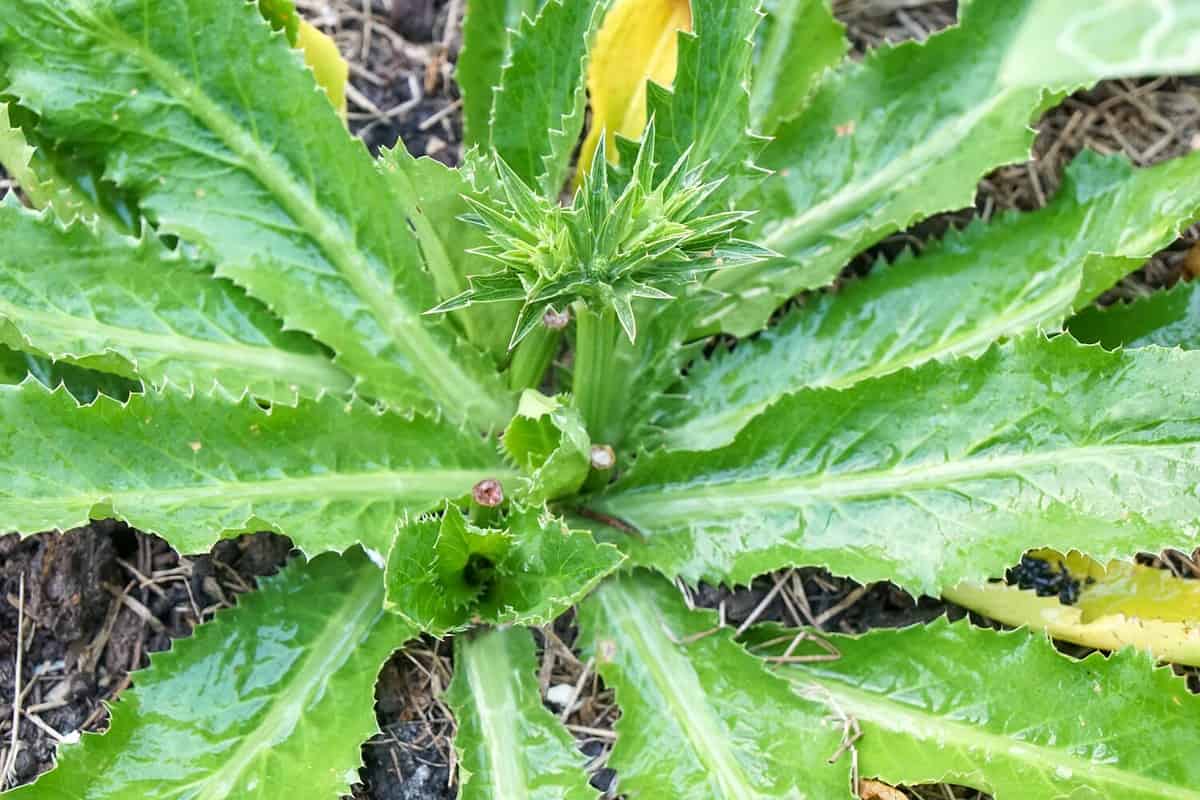
A culantro plant is very different in appearance from a cilantro plant. Culantro has long, saw-toothed leaves that expand outward.
©Apins/Shutterstock.com
What is Cilantro?
Cilantro is an annual plant that is also described as a delicate herb. The flavor and aroma of cilantro are less strong than culantro, which means it's easier to add the herb after cooking.
The cilantro plant also varies from culantro. The leaves are scalloped and grow on long thin stems. Furthermore, sometimes cilantro is called Chinese or Mexican parsley.
Cilantro grows with access to direct sunlight for at least six hours. However, this herb doesn't do well in high heat and too much direct sunlight. So, providing shady or cool temperatures for your cilantro is important.
The flavor of cilantro also varies a bit from culantro. It has more fragrance and citrus flavor, making it perfect for a garnishment atop many different dishes.
Delicious Recipes That Use Cilantro
Cilantro is very popular as a garnish; this herb will bring these dishes to a more flavorful dimension. Below are yummy recipes that use cilantro!
- Grilled Chicken with Thai Cilantro Dipping Sauce
- Halibut Soft Tacos
- Mexican Kale Salad and Zesty Cilantro Lime Dressing
- Cilantro and Lime Beef Enchiladas Recipe
- Spaghetti Squash with Edamame-Cilantro Pesto Recipe
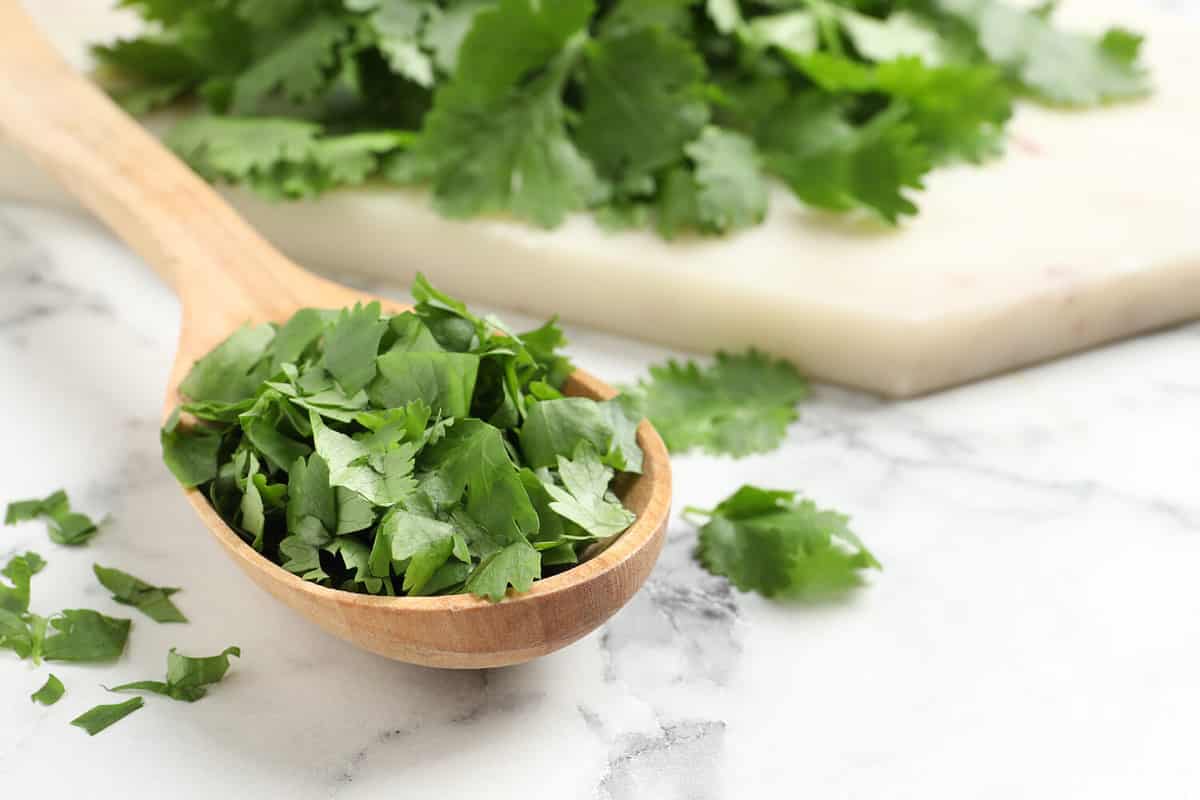
Cilantro is a popular herb that usually gets tossed on top of a dish after it is cooked. It is possible to cook cilantro into your dishes as well. Just do it at the end and only for a few minutes!
©New Africa/Shutterstock.com
Can You Substitute Culantro for Cilantro?
Yes, it is possible to substitute culantro and cilantro for one another. It is important to remember the differences in cooking methods between the two. Cilantro can be added to the dish right after it is cooked or for a minute or two at the end. On the other hand, culantro can be cooked within the dish because the loss of flavor and aroma benefits the flavor profile.
There are also differences in flavor and aroma, yet both herbs are excellent for spicing various dishes.
In Conclusion
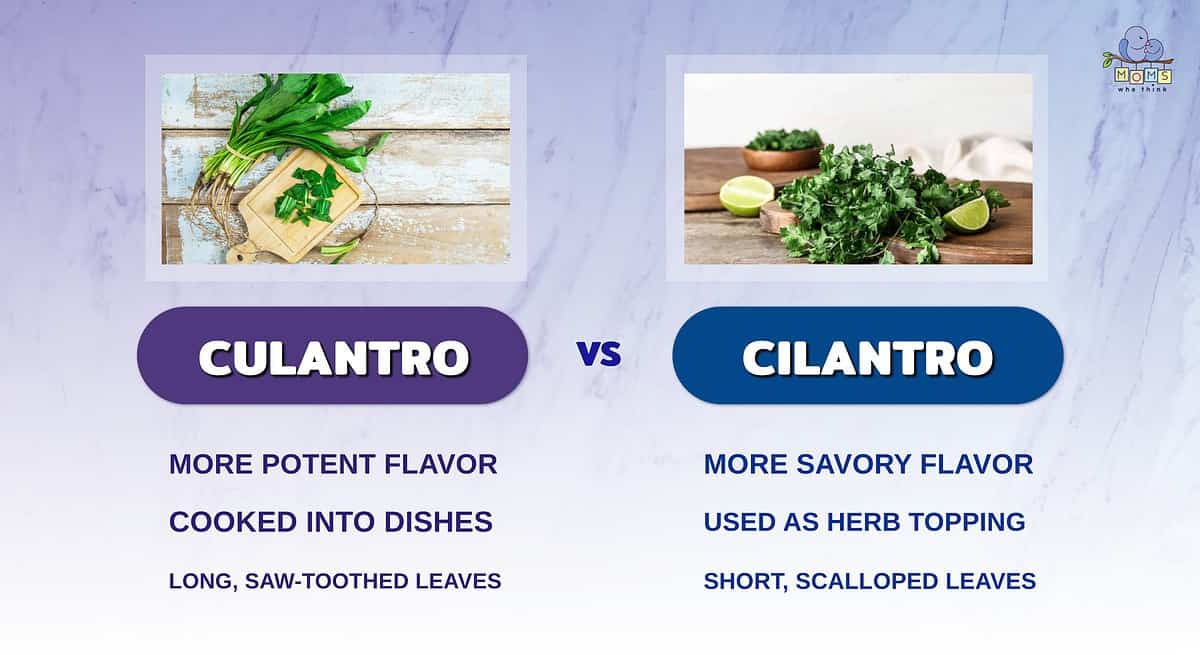
Both culantro and cilantro are delicious and flavorful herbs that can add a new dimension of flavor to your dish. Some people love these herbs because of the distinctive and flavorful taste they bring to the table. Others are off-put by these two's strong and intense aroma and flavor. Regardless of where you fall on the line of love or hate between these two herbs, one thing is sure. The level of flavor that both bring to virtually any dish goes beyond expectations.
You may assume that cilantro and culantro are similar, but they each have their own differences. Let's take a look at how they differ:
- While cilantro is commonly used as an herb topping to dishes, cilantro, on the other hand, should be cooked into recipes.
- Their distinct look is a big difference. Culantro has long leaves with serrated edges, while cilantro is known for scalloped leaves, similar to parsley.
- Many say cilantro has a distinct flavor; some claim it tastes soapy. Culantro, though, has a more potent flavor.
Herb Posts
- Preserving Fresh Herbs
- DIY Hanging Herb Garden
- Herbed Chicken Lasagna Recipe
- Succulent Herb Crusted Salmon Recipe
- Whole Roasted Garlicky Herb Chicken Recipe
The image featured at the top of this post is ©catinsyrup/Shutterstock.com
